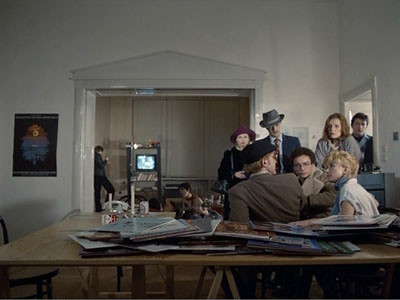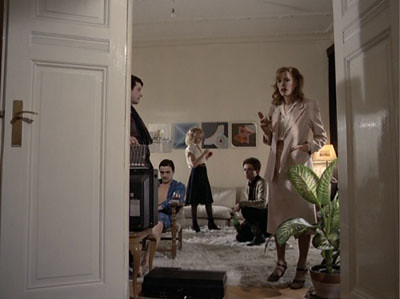Eastern Promises
If you like art-film-at-the-multiplex movies on the Coppola-Kubrick-Lynch-Polanski-Scorcese spectrum of cinematic grandeur, you should watch Eastern Promises; nobody knows when one of these movies will be the last of its kind. An early head-on shot of Anna (Naomi Watts) riding her motorcycle confirms the film’s claim to cinema in the grand sense of wide pictures, deep dreams, and saturated color. Cronenberg shoots on film and then does digital touch-ups, but Eastern Promises looks like something from the 70s, like the print you’re watching has been shown all summer—the palette, which is perfectly composed, is perfectly textured—and the drab silveriness of the motorcycle shot isn’t Soderberg-Spielberg slick but rich and overfull, and you can imagine film stock lattices of square holes running down the sides of your vision. Cronenberg has made a lot of good movies—sick and scary ones (the amniotic/incestuous Dead Ringers is a psychoanalytic regression-event best experienced alone, and it outdoes Matthew Barney in terms of surgical instrument-fetish), stylized Cultural Studies dissertation material (think of the mallscapes of Scanners or the Medici fashion eyewear show at the end of Videodrome), perfect 80s pop (The Fly is the paradigm Jeff Goldblum charming goofball performance), and interesting failures (A History of Violence, a sort of Stephen King rewrite of Empire Falls, looks like it is made for Sunday night TV but sustains an addictive mood of dread)—but Eastern Promises is a masterpiece: its secret crime networks and rituals and codes are fascinating, but the moral underworlds beneath them are sublime; the gross-outs are metaphysical wonders (the Chechens’ knives, whose shape you will not soon forget, slice throats so cleanly that murder looks like a kind of editing of space and time); we are taken to the weird infinite yellowy bathhouse that many of us know from dreams; the story undergoes a narrative reordering too deftly executed to be called a “twist”—something more like a beautiful arc in knowledge; and the villains, who feel like old friends, may look at you later out of dreams, their faces outlined and vivid, a set of masks installed by the filmmaker, now calling on you with a horrifying power of persuasion.



